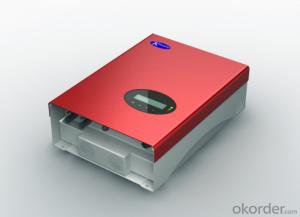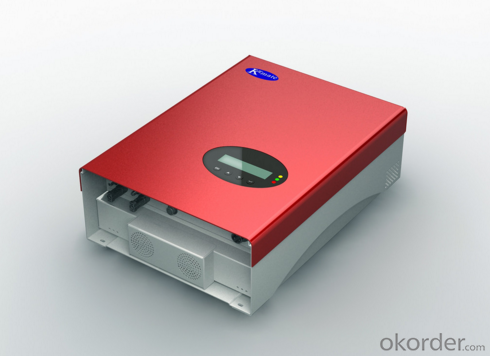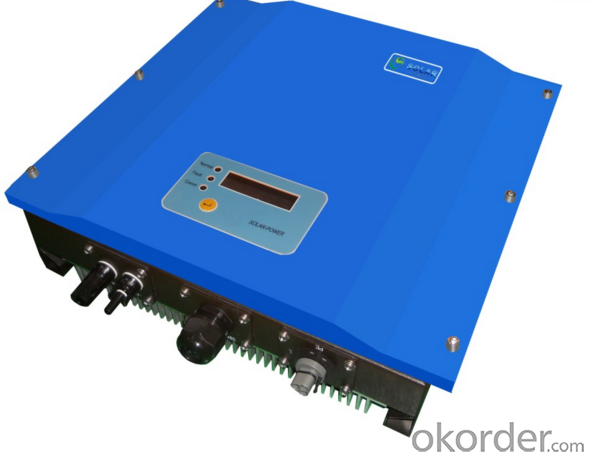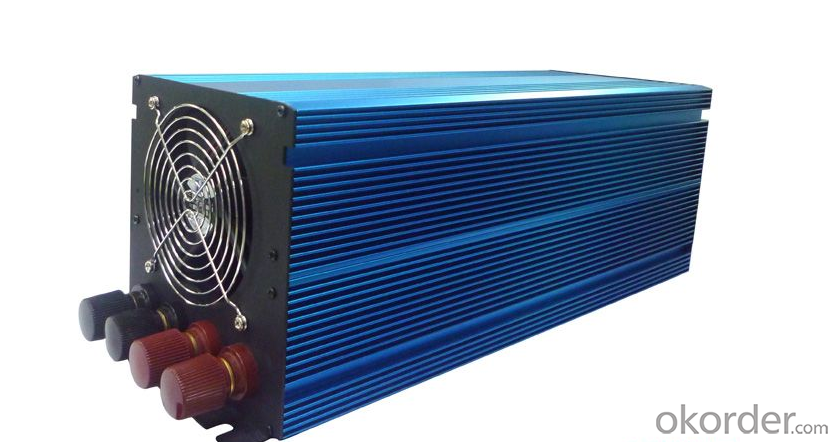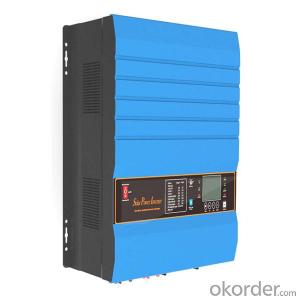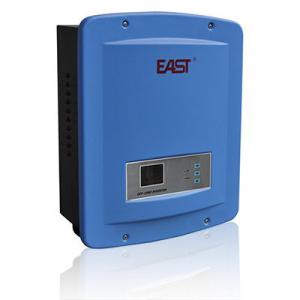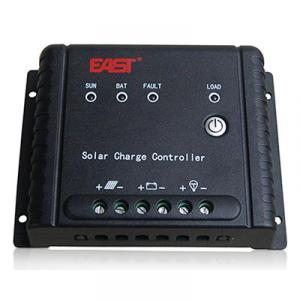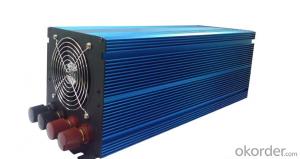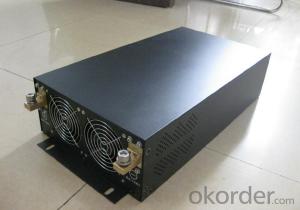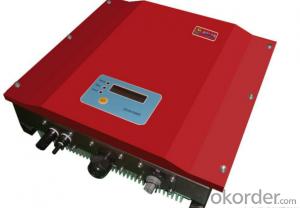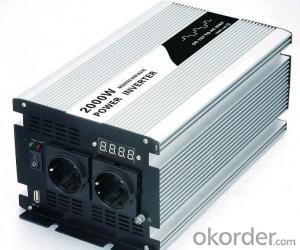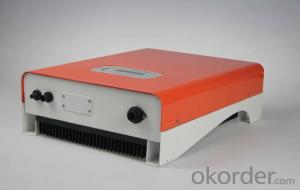Statcon Solar Inverter - Three Phase Solar Inverter Made in China
- Loading Port:
- Shanghai
- Payment Terms:
- TT OR LC
- Min Order Qty:
- 0 watt
- Supply Capability:
- 10000 watt/month
OKorder Service Pledge
OKorder Financial Service
You Might Also Like
Description of Three Phase Solar Inverter
Solar ac power system consists of solar panels, charge controllers, inverter and battery; Solar energy does not include inverter dc power system. Inverter is a kind of power conversion device, inverter by incentives can be divided into self-excited oscillation inverter and separately excited oscillation inverter.
Features of Three Phase Solar Inverter
Standard 10 years warranty, 5-15 years optional
Built-in Gprs as option
Built-in Wifi as option
External Inductor
Smaller and lighter, only 22kg
High performance DSP for algorithm control
VDE-AR-N 4105 certification
New topology design
Dual MPPT design
IP65 waterproof and dustproof level
Multi-button touch interface
LCD screen visible at night
Have anti-shading function
Advantages of Three Phase Solar Inverter
Longer life cycle
Plug and play
Free monitoring through our webportal
Very lower internal temperature
Easy transportation and installation
Faster CPU speed
Adjustable active and reactive power
Maximum conversion effciency up to 97.6%,Euro up to 96.8%
More flexible system design
Maximized system profit
User friendly operation
24 hour operation data readable on screen
Suitable to complex installation environment
Technical Data of Three Phase Solar Inverter
| Type | Omniksol-5k-TL2-3P |
| Input(DC) | |
| Max.PV Power | 5150W |
| Max,DC Voltage | 1000V |
| Nominal DC Voltage | 640V |
| Operating MPPT Voltage Range | 150-800V |
| MPPT Voltage Range at Nominal Power | 260-800V |
| Start up DC Voltage | 250V |
| Turn off DC Voltage | 150V |
| Max, DC Current(A/B) | 11A/11A |
| Max, Short Cicuit Current for each MPPT | 16A/16A |
| Number of MPP trackers | 2 |
| Max, Input Power for each MPPT* | 5150W* |
| Number of DC Connection | A:2/B:2 |
| DC Connection Type | MC4 connector |
| Output(AC) | |
| Max,AC Apparent Power | 5000VA |
| Nominal AC Power (cos phi = 1) | 5000W |
| Nominal AC Current | 7.2A |
| Nominal AC Voltage | 3/N/PE;220/380V |
| 3/N/PE;230/400V | |
| 3/N/PE;240/415V | |
| Nominal Grid Frequency | 50Hz/60Hz |
| Max, AC Current | 8.8A |
| Grid Voltage Range** | 185-276V |
| Grid Frequency Range** | 45-55Hz/55-65Hz |
| Power Factor | 0.9 capacitive... 0.9 inductive |
| Total Harmonic Distortion(THD) | <2% |
| Feed in Starting Power | 30W |
| Night time Power Consumption | <1W |
| Standby Consumption | <10W |
| AC Connection Type | Plug-in connertor |
| Efficiency | |
| Max,Efficiency | 97.6% |
| Euro Efficiency | 96.8% |
| MPPT Efficiency | 99.9% |
| Safety and Protection | |
| DC Insulation Monitoring | Yes |
| DC Switch | Optional |
| Residual Current Monitoring Unit (RCMU) | Integrated |
| Grid Monitoring with Anti-islanding | Yes |
| Electricity Fuse Protection | Yes |
| Protection Class | Ⅰ(According to IEC 62103) |
| Overvoltage Category | Ⅲ(According to IEC 62109-1) |
| Reference Standard | |
| Safety Standard | EN 62109, AS/NZS 3100 |
| EMC Standard | EN 6100-6-1, EN 6100-6-2, EN 6100-6-3 EN 6100-6-4, EN 6100-3-2, EN 6100-3-3 |
| Grid Standard | VDE-AR-N4105. VDE-0126-1-1,G83/1,EN 50438,RD1699,CEI 0-21, AS4777,C10/C11 |
| Physical Structure | |
| Dimensions | 352x421x172.5mm |
| Weight | 22kg |
| Environmental Protection Rating | IP 65 (According to IEC 60529) |
| Cooling Concept | Natural convection |
| Mounting Information | Wall bracket |
| General Data | |
| Operating Temperature Range | -25℃ to +60℃(derating above 45℃) |
| Relative Humidity | 0% to 98%, no condensation |
| Max. Altitude (above sea level) | 2000m |
| Noise Type | <40dB |
| Isolation Type | Transformerless |
| Display | 20 x 4 LCD (800x480 TFT Graphic Display optional) |
| Data Communication | RS485(WiFi, GRPS optional) |
| Computer Communication | USB |
| Standard Warranty | 10 Years (5-15 years optional) |
IMages of Three Phase Solar Inverter

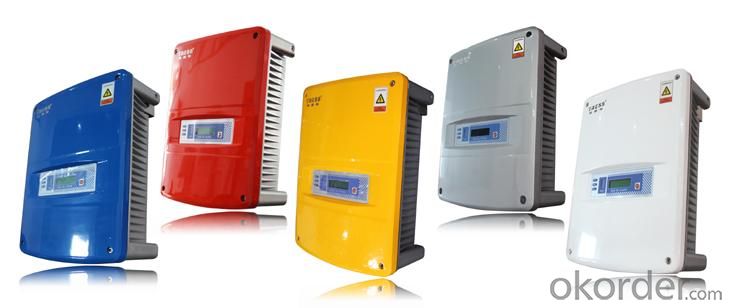
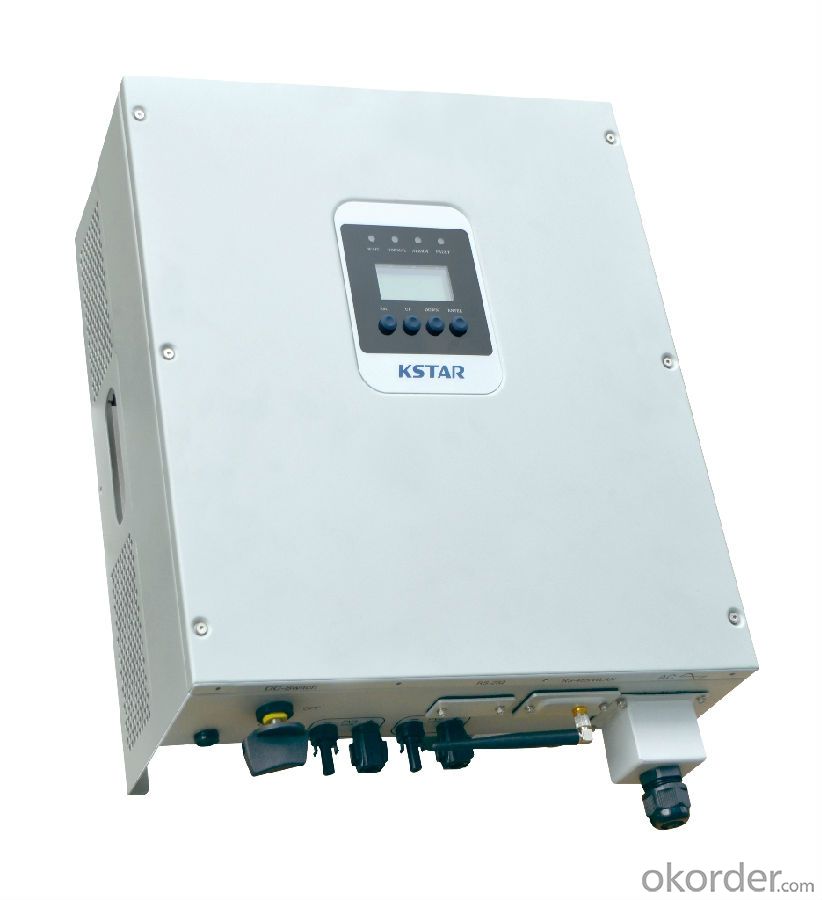
FAQ
Q: Do you have the CE, TUV, UL Certification?
A: We’ve already passed all the tests, and any certificate is available.
Q: Have you ever sold your products to companies in my country?
A: Of course, we have customers in all general PV markets, but I think we should expand our market share along with the market growth.
Q: When did your company set up? You are a new company, how can I believe your quality?
A: We entered into Solar PV industry in 2005, now we have several plants in manufacturing of a-Si and c-Si panels, and our capacity is 220MW per year. Till now we have already passed all the tests by authorized laboratories, e.g. TUV, CE, UL.
Q: Can you help us install the module if we cooperate with you?
A: We haven’t entered into installation sector, but we have the plan in near future.
Q: How do you pack your products?
A: We have rich experience on how to pack the panels to make sure the safety on shipment when it arrives at the destination.
Q: Can you do OEM for us?
A: Yes, we can.
Q: Can we visit your factory?
A: Surely, I will arrange the trip basing on your business schedule.
- Q: Why is a solar inverter necessary in a solar power system?
- A solar inverter is necessary in a solar power system because it is responsible for converting the direct current (DC) generated by the solar panels into alternating current (AC) that can be used to power household appliances and be fed back into the electrical grid.
- Q: What is the maximum number of parallel inverters that can be connected?
- The maximum number of parallel inverters that can be connected depends on various factors such as the design and capacity of the inverters, the load being powered, and the electrical infrastructure. However, in general, there is no fixed maximum number as long as the inverters are properly sized, synchronized, and connected in a well-designed electrical system.
- Q: What is the role of a transformer in a solar inverter?
- The role of a transformer in a solar inverter is to convert the direct current (DC) power generated by the solar panels into alternating current (AC) power that can be used by household appliances and fed into the electrical grid. The transformer steps up or steps down the voltage as necessary to ensure efficient power transmission and distribution. Additionally, it provides electrical isolation and protection from voltage fluctuations, ensuring the safe and reliable operation of the solar inverter.
- Q: What is the PV inverter starting voltage
- The inverter not only has the function of direct current conversion, but also has the function of maximizing the performance of the solar cell and the system fault protection function. (With grid system), automatic voltage adjustment function (for network connection), DC detection function (for network connection), DC grounding detection (for network connection), automatic power control function Function (for grid connection). Here is a brief introduction to automatic operation and shutdown function and maximum power tracking control function.
- Q: Can a solar inverter be used with different types of power control devices?
- Yes, a solar inverter can be used with different types of power control devices. Solar inverters are designed to convert the direct current (DC) produced by solar panels into alternating current (AC) that can be used to power various electrical devices. They can be integrated with different power control devices such as charge controllers, smart energy management systems, and battery storage systems to optimize the efficiency and performance of the solar power system.
- Q: Can a solar inverter be used with a solar-powered emergency lighting system?
- Yes, a solar inverter can be used with a solar-powered emergency lighting system. The solar inverter is responsible for converting the DC (direct current) power generated by the solar panels into AC (alternating current) power that can be used to power the emergency lighting system. This allows the system to store excess energy in batteries and provide uninterrupted power during emergency situations.
- Q: Can a solar inverter be used off-grid?
- Yes, a solar inverter can be used off-grid. Off-grid systems typically include a solar panel array, a charge controller, batteries for energy storage, and an inverter to convert the stored DC (direct current) electricity from the batteries into AC (alternating current) electricity for use in off-grid applications. The inverter plays a crucial role in converting the DC power from the solar panels or batteries into usable AC power, making it possible to power various appliances and devices off-grid using solar energy.
- Q: What is the power factor of a solar inverter?
- The power factor of a solar inverter is a measure of how effectively it converts the DC power generated by solar panels into AC power that can be used by electrical devices. A high power factor indicates efficient conversion, while a low power factor signifies energy losses.
- Q: Can a solar inverter be installed indoors?
- Yes, a solar inverter can be installed indoors.
- Q: Are there any maintenance requirements for a solar inverter?
- Yes, there are maintenance requirements for a solar inverter. Regular inspections, cleaning, and monitoring of the inverter's performance are necessary to ensure it operates efficiently and effectively. Additionally, components like capacitors and fans may require replacement over time. Following manufacturer guidelines and seeking professional assistance when needed can help extend the lifespan and performance of the solar inverter.
Send your message to us
Statcon Solar Inverter - Three Phase Solar Inverter Made in China
- Loading Port:
- Shanghai
- Payment Terms:
- TT OR LC
- Min Order Qty:
- 0 watt
- Supply Capability:
- 10000 watt/month
OKorder Service Pledge
OKorder Financial Service
Similar products
Hot products
Hot Searches
Related keywords
